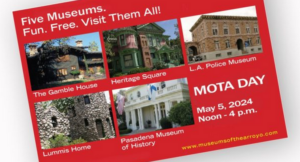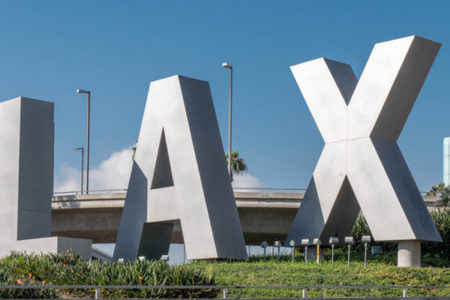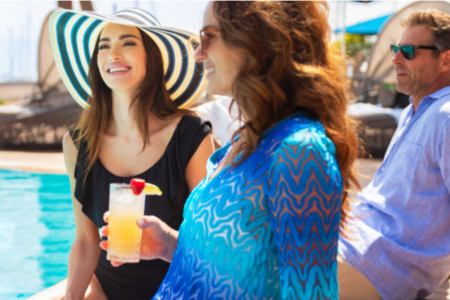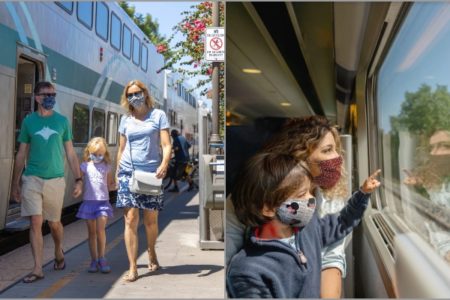Editor’s Note: Pasadena Now’s Weekendr Magazine Editor Eddie Rivera traveled 115 km of the 500 km Camino de Santiago in Northern Spain in mid-late July of this summer. This is his ongoing series and travelogue.
I’m sitting in my room on the third floor of the Pension Orois in Melide, staring out the window straight across at the deep green forested hills of the Galicia region in Northern Spain, where I have been making my way through since Friday.
This is the third day of my 115 km (81 mile) trek on the Camino de Santiago, a small portion of the 500 km pilgrimage of the Faithful (of which I am not one), from St Jean Pied de Port (Don’t try to pronounce it. Let’s move on), to the City of Santiago de Compostela.
That stroll takes you across the French border into Spain, and then up and over the Pyrenees, ending 330 km away, a month or so later at Santiago De Compostela (roughly “field of stars”), or for the more adventurous, Finisterre (“End of the Earth”), which is one more day’s walk away, at Spain’s northern tip.
So what is the Camino de Santiago, and why is it important to so many? Here’s the short version:
According to the popular story, St. James the Greater, an apostle in the lands of Roman Hispania, was part of the early Church in Jerusalem, and for his evangelizing work was awarded the territory of Hispania—Spain.
But James had to return to Jerusalem to see the Virgin Mary on her deathbed. When he arrived in the year 42, he was caught, tortured and beheaded by Herod Agrippa I, king of Judea, for breaking an order not to preach Christianity.
Soon, two other disciples—Athanasius and Theodore—under the cover of night, stole the body of St. James the Apostle and took it in a boat to Gallaecia (Galicia). That ride took them to Finis Terrae (today’s Finisterre) and later to the port of Iria Flavia (near today’s Padrón).
The story goes that Santiago’s body was transported in a cart guided by oxen to the forest of Libredón. But there, the oxen refused to continue. The disciples took this as a divine sign and it was by default, chosen as a burial place.
Eight hundred years later, a hermit named Pelayo observed some glowing lights coming out of a nearby field, (nowadays Compostela), and he reported the discovery to Theodomyrus, bishop of Iria Flavia, who rushed to meet him.
In the field, they found an altar with three funerary monuments. Lo and behold, one of them contained a beheaded body with the head under the arm. A sign read, “Here lies James, son of Zebedee and Salome”.
King Alfonso II then ordered that a small chapel should be built over the remains of the sepulcher, a sacred place that eventually became the current Cathedral of Santiago.
When word got out, pilgrims came walking. The church became a place of pilgrimage for millions of Europeans during the Middle Ages. A specific route—several routes, actually, were designed and built across Spain, from numerous directions.
All the roads led to Compostela.
CHAPTER TWO: How and why I’m walking the Camino de Santiago
As I have written here before, I lost my brother Raymond to cancer last year. The loss of a sibling, especially a younger one, is the kind of searing pain one hopes to never have to go through. I feel the loss every day, and will for quite some time.
That said, he did the Camino across Spain ten times, in one form or another over about ten years—sometimes the full walk from St. Jean, sometimes a shorter route. But ten times.
Ten.
I had only the resources and time to do it once. But a cousin and I both promised him we would do it. When I told him of my goal in those last days, he said, “That’s fine, but you have to do it.”
I didn’t need any more motivation.
The Camino de Santiago is essentially a religious pilgrimage, but I am not religious, nor was my brother. One important tenet of the Camino, however, is that everyone does the Camino in his or her own way.
I had my way and my reasons for going. I began researching and seriously training.
After first selecting the Astorga route to Compostela, which my cousin and her husband chose, then modifying that to the 115 km Sarria-Compostela, a few days shorter route, my Camino would be six days (as compared to the full 30), with varying 9-15 mile days each day.
I had been training, sort of, since 2019, when I underwent quintuple bypass open heart surgery following a seizure and heart attack. I began walking every day, and climbing a 134-step staircase near my home, at least twice, every afternoon.
To that, I added regular trips around the Rose Bowl stadium—a 3.3 mile loop. Three times around would equal a typical Camino day. This began in March.
I assumed a weekly training schedule—stairs every day, which I mostly did; the Rose Bowl at least three-four times a week, which I also mostly did, and then, my plan was to train longer distances with a full backpack for at least two weeks before departing for Spain. That never happened.
I had decided to have my large backpack transported by Correos, Spain’s national postal service, from town to town as I walked. The luggage was always faithfully delivered each day to my hotel, and I carried only a small day pack with me on the trail.
Even that was too much, I think. That pack held lots of stuff I didn’t need. Why am I carrying two phone chargers and an adapter with me on the walk? Hair gel? Really? My extra car keys?
The fresh fruit I told myself I would carry? Yeah, no.
And, as the date drew closer, I realized that this venture was not going to be cheap. Airfares had doubled since last year. And there were lots of meals and various sundry expenses to pay for.
As a travel writer, I was able to arrange accommodations for hotels in Madrid in exchange for feature articles. But not on the Camino. Those little hostels didn’t do that sort of thing. I needed to fundraise.
Having staged my own little personalized fundraisers during Pandemica—playing songs on Facebook Live every night in my living room for 385 nights in a row, for various charities—it was time to up the ante.
I restarted the living room shows and staged two live shows with my band, The Andersons, in a Pasadena photo gallery. The first one was actually hosted by Pasadena’s Mayor Victor Gordo.
The shows rocked, but financially, they were a disaster (Don’t get me started). I went back to rocking out live in my living room, and donations came in. This donation would pay for five dinners, that one would pay for a night in a hostel, this one would buy a train ride.
And so it went.
I bought my airfare in three manageable bites. It would be LA to NYC on JetBlue, a ten hour layover at JFK, and then a flight from NYC to Madrid on Iberia, followed by another eight-hour layover, and then one night in Madrid in a rented apartment, followed by a 5 hour train and bus ride from Madrid to my starting point, Sarria, in the north of Spain.
CHAPTER THREE: We Walk.
Friday, July 21, 2023 —Having traveled on a Monday from Los Angeles to New York City, and then flying from New York City to London, and then flying from London to Madrid, and then boarding a train from Madrid to Sarria, I was excited and just a little nervous, about actually beginning my Camino on this Friday morning.
Sarria, where I began, and where I bought my hiking poles the night before my walk, is a common starting point of the Camino de Santiago.
It is 115 km, or about 81 miles, from Santiago de Compostela, qualifying a pilgrim for their credential.
A number of pilgrims choose this town to begin their Camino and qualify for the certificate issued at the Pilgrim office near the Cathedral in the Plaza Santiago.
Sarria and Santiago de Compostela are only a relatively short distance apart, so it will take me about six days and seven nights to complete the walk.
Realizing that my originally planned itinerary would create more than three 15-mile days, which is a tough walk, I split one of the days in two. This made things just a little bit more reasonable in terms of time and energy required.
The Camino de Santiago from Sarria is divided into five stages, so beginning the Camino from Sarria is a perfect spot for beginners, or those with less time and resources to complete the entire 500 mile walk from Saint John Pied de Port.
I set my alarm for 6:30 AM each morning to allow me enough time to be out the door and onto the street by 8 AM. I had taken time the night before to look for a café near my hotel, and as I nervously sat with my coffee and croissant, I realized that I was the only pilgrim in the café, and I had no idea which way I would turn when I walked out the door. Literally.
I carried only a day pack and my hiking poles. Mornings were cold, so I wore a jacket. As I mentioned before, my large backpack would be transported to the next town for me.
I stepped out onto the main boulevard Friday morning and looked around. No one on the streets. I spotted a yellow arrow painted on a wall, one of thousands across Spain. Those lead you through the Camino.
Soon I came upon another pilgrim. I nodded and asked, “Camino?”
He nodded, and I asked, “Donde?“ He shrugged.
I turned around and walked in the other direction and spotted a group of four pilgrims walking out of town. I quickly joined their group and realized they had no idea which way to go, either, but they had a certain sense that maybe I did.
Those hills right over there were our route, we surmised.
As we began our climb, following a map on our phones, we were about 100 yards up the first hill when an older gentleman came out of his house to greet us.
He spoke in Galician, but said to us, essentially, “If you’re going on the Camino, you’re going the wrong way. Turn around and go back down the hill and walk up that other hill.”
We were off to an inauspicious start.
Like most of the days of walking the path, the road out of Sarria towards Portomarin, a river town, winds up and up and up, into the hills and forests of Northwest Spain, in the region of Galicia.
We would be walking completely off main roads, and walking the same narrow mountain trails that pilgrims had walked since the first century. At literally every left or right turn, there was a concrete marker with the scallop symbol of the Camino emblazoned on it, and a yellow arrow pointing us in our direction.
As we climbed, my nervousness fell away, and I dare to say it, I felt exhilarated. Each new curve opened up a new spectacular vista, enchanting views of green rolling fields, and mist-dappled hilltops, leading into deep green forests. On that first morning, I literally saw a path and curve that I had seen in photos in countless articles about the Camino. I was now in that picture.
This is what I trained for, although this isn’t a race or any kind of competition. I’ll say this a few times—you’re just walking.
For all of the YouTube videos and research articles that I had seen, where someone went on ad nauseum about hiking boots and thick wool socks and training routines, and the necessary amount of water and supplies you need to carry, and the weight of your backpack, you’re simply walking. Whatever shoes you’re wearing, whatever type of backpack you’re carrying or not carrying, whatever is in your backpack, or isn’t in your backpack, you’re just walking.
The only advice I took heed of, or was concerned with, was blisters. Constant rubbing against a surface either between your toes or your heel and your shoe, will create a blister, and one blister will take you out of the game for at least a day. That’s what I was worried about.
Use Vaseline, I was told. Rub it all over your feet between your toes and all over your heels. This will eliminate the friction that causes blisters.
Guess how many times I did that? Right. None. Actually, check that. I did it once, three days into my walk.
At some point in the middle of my training, I had thought, “I have worn these shoes for two months now, and they’ve never given me blisters. I’m walking on the same types of roads that I will walk on the Camino. What would be different?”
There was no difference. I never got a blister, never came close.
But don’t use me as any kind of measure — just break in your shoes, and use the Vaseline.
Once on the walk, I never concerned myself with distance. Distance can be a little daunting to think about. It was much easier to simply gauge time. I knew that a 15 mile walk would take me about five hours and 30 minutes. That was my measure. If I stopped for a break, I added that to my time, not to my distance.
And I just walked.
To be honest, I’m probably older than everyone reading this article but, I simply walked. I never stopped. I just walked. There were some tough moments, some steep hills, and I used my hiking poles occasionally. But I just walked.
Each time I came to a Cafe on that first day, I thought, “No, not yet, I’ll just walk a little further.”
And so I did.
I didn’t stop for coffee and something, until about three hours into the walk. And each time I did, I felt, as I did throughout the week, that I was somehow late, that I needed to hurry. I’m sure it has something to do with a journalist’s preoccupation with deadlines. But I always felt like I was late.
I talked to only a few people on that first day, and to be honest, I wouldn’t talk to many more as the week continued.
I was struck between wanting to be alone, and feeling lonely.
But I came to find that every day would be similar. The first two hours of each morning will be walking uphill, in what seems like an endless climb. You’re dazzled and humbled by the scenery, but then you’re interrupted by groups of people talking and chattering.
I wore my earbuds and listened to music whenever others were around. I didn’t want to be in their conversation, but when I was alone, there was only the crunchy sound of my footsteps on the gravelly medieval and Roman roads.
I probably took two café stops on each walking day, sitting alone, surrounded by pilgrims in the mountain cafés. Despite the Camino’s recent increase in popularity, fueled by the recent re-release of the Martin Sheen/Emilio Esteves film, “The Way,” I saw very few Americans on the route. Come to think of it, I don’t remember any.
There were numerous Spaniards and several large groups of Mexican students, along with quite a large number of UK residents. And the pilgrims were of every age. There were children, and there were seniors on every step of the road, every day.
Walking down out of the forests of Galicia, which we would do a lot, we descended down a steep hill into the river town of Portomarin. As each day would be, the last miles before you reach your destination are always the toughest.
Portomarin is perched on steep hills alongside the Encoro de Belesar river, and once you cross the quarter mile bridge across the water, there’s a staircase up into the town itself. And then another staircase to reach the main part of town. But honestly, it’s not as long as the neighborhood staircase I climbed all those training days.
CHAPTER FOUR: Portomarin to Palais de Rei: Just Keep Walking
PORTOMARIN, SPAIN, JULY 22, 2023—The clerk at my Auberge in Portomarin explained to me carefully, “You want to go back down the hill to the roundabout, and then turn right on to the (something something), and make sure you don’t take the other road, which is the (other something something), because if you do, you’ll miss the row of cafes on your way out of town.”
So, perfectly on cue, I missed the other something something, and began trekking out of Portomarin on its first 1 hour and 45 minute, 1,050 meter climb into the hills approaching Gonzar and Castromaiora, a distance of about 7 kilometers, on the way to Palas de Rei, for a total of 15.3 miles.
Uphill. With no coffee. Not amused.
The steep walk from Portomarin to Palas De Rei would be the toughest day of the week, barring the final day. But we’ll get to that.
This was the first real walk into the deep Galician forests, with their mossy, towering canopies of trees and shrouded woods under layers of monochromatic gray skies. The morning was cool, with a curtain-like mist dropping gently down onto the hillsides as we climbed.
The cafe at Gonzar finally provided a bocadilla sandwich, coffee and orange juice, about two and a half hours after setting out from my auberge. I devoured it like a condemned prisoner before setting off once again on a route that I thought was shorter than it was. The Portomarin route follows and moves across route LU-633 in Lugo, which traverses the mountain path, cresting at Sierra Ligonde at 720 meters, or 2,360 feet.
This is about an equivalent to a day hike deep up along the Angeles Crest Highway, leaving the city far behind you.
This second day would also establish the patterns of steep walks up and into the hillsides surrounding a particular town or village, longer walks through the dark green forests, and then sweeping hilltop vistas of rolling hills surrounded by stone walls built hundreds of years before. Then the careful steep descent back into the next town.
The other pattern was gauging my walk each day in hopes of walking alone without the constant din of conversation all around me. Though I was sometimes lonely, and I experienced moments of no one in front of me and no one behind me for long stretches, I always preferred being alone on the walk.
My conversations were very friendly but brief, and I had the feeling that those who engaged me quickly sensed that I would be off on my own path momentarily.
On several days, in several villages—which sometimes consisted only of three left turns and two right turns—there were numerous abandoned stone and wood houses, clearly built in the 14th and 15th centuries, and perhaps earlier. They may have stood unmolested through the hundreds of years they’ve occupied the Camino path, or were perhaps abandoned in a shift of local economic fortunes much later in life. Still, I found each one fascinating.
Meanwhile, I rarely made the recommended detours for this cathedral or that cross on the walk. With apologies to any religious readers, the ancient Camino road itself was all the history and spirituality I needed, and a visit to a church wouldn’t change things.
As I had previously mentioned, I began to think in terms of time, not distance. Three miles an hour. That made it easier to calculate and measure my stops, of which there weren’t many.
Based on my photographs, I made three brief meal stops on this day, and as I also had previously mentioned, I still couldn’t shake the sense that I was on the clock and had to finish by a certain time. I looked forward to finishing my walk at about 2 p.m. each day, and as the hour approached, I could feel my pace quicken as I descended out of each day’s hills.
I ended up arriving in Palas de Rei at about 4 p.m. My auberge, the Acubillo, was almost empty, as was the one on the previous night. For the second evening in a row, I would be sharing a bathroom. I never saw anyone that evening or even early the next morning, as I set my backpack out for Correos, the national postal service.
Meanwhile, as each new Peregrino completes their research for their Camino, they’re bombarded with advice and information—most of it half-fact and half-opinion, whether in YouTube videos and Facebook groups, emails or smoke signals. Everyone has an opinion, or a story on their experience, or lack of it.
Like first year college psychology students, pilgrims become Camino experts immediately, for better or for worse. One of the many tales and myths about the Camino concerns meals and cafes, for example. The fear that anyone will be on the route without food or water for any great length of time is a worry I heard often.
But there are larger cafes every few miles, fruit stands in every village, and contrary to the popular myth, all restaurants are not closed every afternoon for siesta. There are many open. If your daily town is a larger one, there is a supermarket. The term “pilgrim” is relative, Pilgrim. You won’t go hungry.
Just keep walking.






